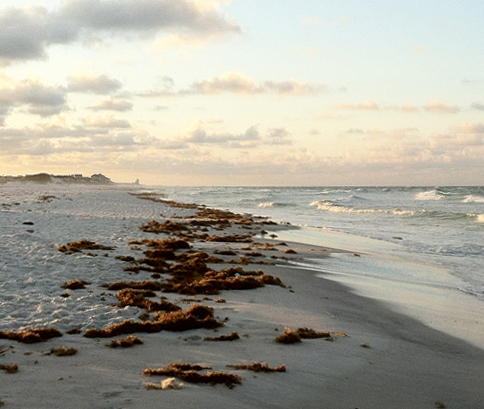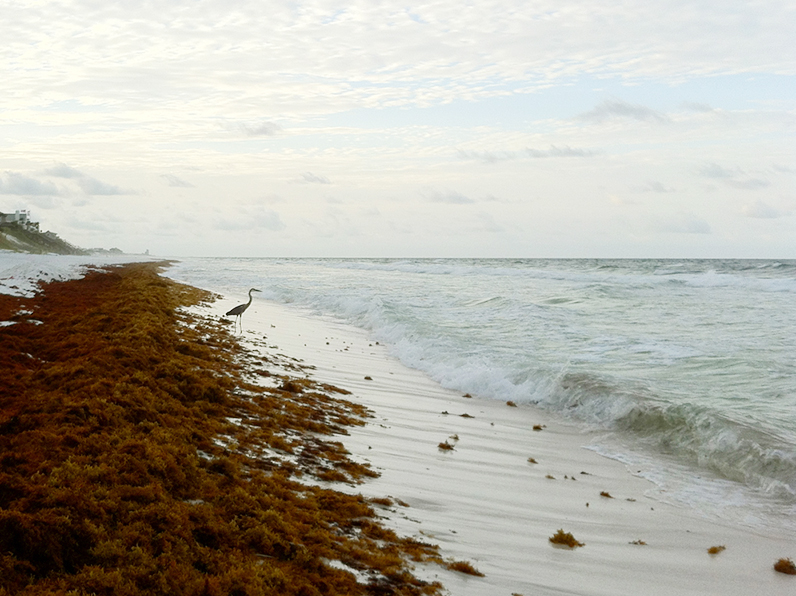
Beach wrack full of curiosities
When walking the beach this summer, pause and ponder the virtues of stranded seaweed. Those scattered clumps along the high-tide line actually have a name – beach wrack – and are a pivotal part of the beach ecosystem.
“Many might think sand makes a beach, but it’s the wrack that truly brings a beach to life,” said Blair Witherington, a Florida Fish and Wildlife Conservation Commission (FWC) biologist who studies beach life. “It sponsors some of the most appealing things that beaches offer, and it’s also the best place to find seashells and other seaborne curiosities.”
Beaches can be barren places without their wrack because the nutrients, moisture and protection provided by a good wrack line bring unique life to this “desert.” Beach wrack is both living room and buffet table for a host of fascinating animals. Look carefully to find swift-footed ghost crabs, pearl-colored beach tiger beetles, or birds, such as ruddy turnstones and the rare and elegant piping plover.
Beach wrack consists of sea grass, reeds and marine algae that have drifted at sea before washing ashore, especially after storms. After landing on dry land, beach wrack becomes host to a diverse cast of insects and other tiny invertebrate animals, such as jumping beach hoppers, which are harmless rice-sized crustaceans. The tiny animals, in turn, serve as food for many other creatures.
Migrating shorebirds fly thousands of miles each year to munch on the nutritious meals found in that clump of seaweed. Wrack also provides a safe haven for many animals that escape predators by hiding under it or by blending in with it. A shorebird can “disappear” while napping among the similarly colored shades of seaweed browns and grays.

Beach wrack also is critical to the health of the dunes by providing plant nutrients and stabilizing windblown sand. The wrack carries seeds from many dune plants, such as beach morning glory and sea rocket. As sand builds up and the seeds within the beach wrack take root, new dunes grow.
On some beaches, the sand is machine-raked, new dunes are manicured away and the wrack is removed. These efforts cost taxpayers, but there is a price paid by the beach system as well. A natural wrack line is a key component of a healthy beach ecosystem.
“While a natural beach may not look as manicured as a raked beach, the diversity and richness of a natural, functioning beach is infinitely more interesting than the sterile landscape of one that is groomed,” said Nancy Douglass, a biologist who monitors shorebirds for the FWC.
Instead of kicking aside that clump of seaweed on the beach this year, stop and enjoy the huge benefit provided by one small piece of wrack.
“A beach without wrack is like a gallery without art,” Witherington said.
Information courtesy myfwc.com.

